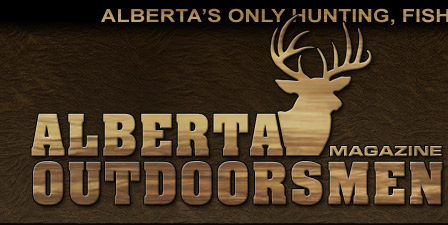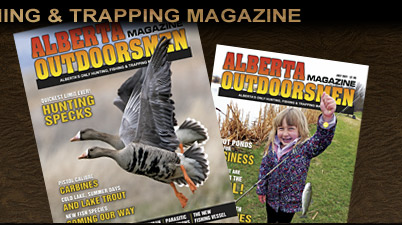|
 |
Caribou hunting typically doesn’t lend itself to the high adventure side of hunting but this trip would be different. I was going to be in Newfoundland to hunt the woodland caribou.
Newfoundland has the only population of this sub-species that can be hunted and although this sub-species is found in my home province of Alberta, it was Newfoundland that would afford me the opportunity to hunt them.
The first leg of my journey brought me to the East Coast of Canada. Notorious for inclement weather, especially in the fall, I was advised to come in a day early. Gale-force winds and heavy rains met me at the St. John’s Airport; it sunk in at this point that just getting to the hunting grounds could be an issue.
The following morning, the sky was blue and nothing but a light breeze remained. It was a scenic drive to the harbour where the floatplane was waiting and only a few minutes after arriving, my gear was loaded and we were on our way.
The flight was short and before I knew it, we were landing on a small lake by my outfitter’s cabin. Stepping onto the dock, the excitement of the hunt greeted me along with the camp staff.
As I watched the plane leave, a true feeling of remoteness set in. Even though the cabin that was waiting was extremely comfortable, we were out there.
Finally, the first morning of the hunt was upon us. Once again, the weather had turned inclement, strong winds and rain greeted us at the door. My guide was reluctant to head out but my persistence to make every day count on this trip eventually prevailed.
A short boat ride later, we came to shore where we would start our hike. What most people don’t realize is that although the ground looks dry, it is actually saturated and almost a bog. The only footwear required is a good pair of Muck Boots. Walking and climbing up soft hills and through forested bogs is no easy task. Your feet quickly become fatigued and let’s face it, Muck Boots, although comfortable, are not hiking boots. The two-hour hike was interrupted only by a handful of stops along the way to investigate small openings in the forest. I was now starting to doubt my decision to head out on this morning. There was no sign of life, no movement, and from previous hunting experiences, I knew it was unlikely anything would be moving if there were strong winds.
We had just made our way to a good clearing, which proved to be an optimal vantage point, and started to glass for signs of movement. It was only half an hour in and I hadn’t seen anything; normally, this wouldn’t bother me but the elements were wearing my patience thin on this particular morning. Being wet and chilled by the wind, time crept by slowly, as I picked apart the lichen-carpeted forest. I searched for any sign of these elusive caribou when an hour into glassing, my guide signaled me, he had spotted a cow. We watched her only 200 metres away, as she weaved in and out through the trees. I wanted to get closer. It was the only caribou we had seen so far and chances of seeing another were slim in my estimation.
Cutting the distance in half, we looked around again. There he was! I spotted the bull. He had been trailing the cow 50 metres back in the bush. It was still pre-rut but he was already keeping tabs on her. I was only half-sure I wanted to take this bull. It was still the first day after all and only a couple of hours into the hunt.
We crept closer. These caribou were in no hurry and with the wind, it was easy to sneak in on the pair. Cutting the distance to under 50 metres, I pulled my rifle out. This bull had excellent bez and sported a double shovel; over all, this was a good representative species and that is exactly what I was looking for.
This would be the closest I had ever been to an animal of this size while shooting and my pulse was racing hard. The rifles report echoed through the forest as the fatal round hit its mark.
Caribou are notoriously tough animals but the distance was too close and the bull collapsed in an instant without taking another step.
The most difficult part of hunting a woodland caribou is the area they live in, migrating herds are typically not seen and it is more luck than skill that will lead you to find one. Thick forests make these animals more of a ghost, wisps through the forest where a small glimpse might be all you see. A split second to make a decision and it is all or nothing. Although there are likely areas to hunt, it is no guarantee you will find one, let alone the trophy bull you want to take.
The decision to head out in the rain and wind and to take this representative bull early in the hunt proved to be a wise choice. The rest of the week turned unseasonably warm, as I spent it scouting and glassing for caribou and all I could turn up was one more cow.
Sometimes ending a hunt early is the right decision! ■
For previous Reader Stories click here.
|
|
|
|


